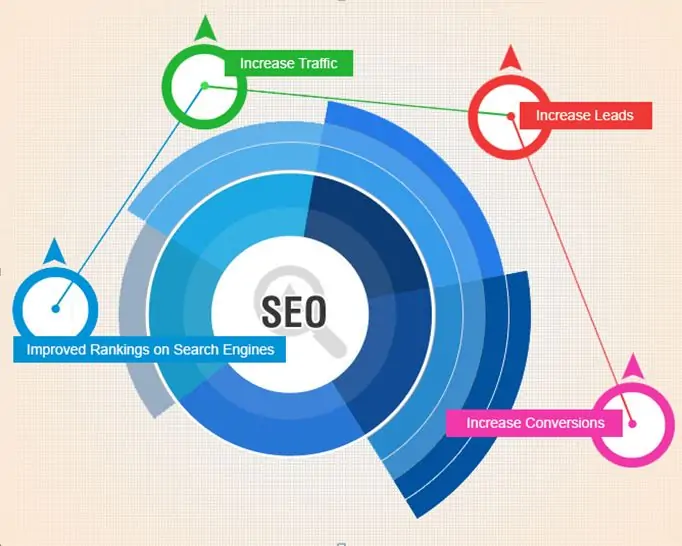Crawlable Links for Effective SEO and Website Visibility
Crawlable links are the unsung heroes of effective search engine optimization (SEO). While much attention is given to content and keywords, these often-overlooked links play a critical role in determining how search engines find, index, and rank your website. Explore the concept of crawlable links, their importance, and how to ensure they maximize your website’s visibility and SEO success.
1. The Foundation of Crawlable-Friendly Links
Before delving into the significance of crawlable-friendly links, let’s define what they are. Crawlable links are hyperlinks within your website’s content that search engine crawlers can access and follow to navigate through your site. They form the pathways that search engine spiders use to index your pages. When you create quality crawlable-friendly links, you essentially provide a map that guides search engines through your website, ensuring every page is discovered and ranked.
2. Why Crawlable-friendly Links Matter
Crawlable-friendly links are vital for several reasons:
- Search Engine Accessibility: They enable search engine crawlers to explore your website thoroughly. When crawlers can’t access all your content, it may remain hidden from search results.
- Indexing and Ranking: Crawlable-friendly links help search engines index and rank your content accurately. Without these links, your valuable pages may go unnoticed.
- User Experience: Crawlable-friendly links also benefit your website visitors, allowing them to navigate your site effortlessly.

3. Types of Crawlable-Friendly Links
There are various types of crawlable-friendly links that are essential for SEO:
- Internal Links: Links within your website that connect different pages. These are crucial for guiding users and search engines through your site’s hierarchy.
- External Links: Links from your website to other websites. While external links aren’t used for your site’s crawling, they can affect your site’s authority and relevance.
- Anchor Text Links: These links use descriptive anchor text to provide context to both users and search engines, helping them understand the linked content’s relevance.
- Breadcrumbs: Navigation links are often found at the top of a webpage, displaying the page’s location within the site’s structure.
4. Creating Effective Crawlable-friendly Links
To ensure your website is easily crawlable, consider the following practices:
- Logical Site Structure: Organize your website logically with clear hierarchies. This not only makes it easier for users but also for search engine crawlers to navigate.
- Use Descriptive Anchor Text: When creating links, use descriptive and relevant anchor text that provides context about the linked content. This helps both users and search engines understand the content’s purpose.
- Avoid JavaScript-Dependent Navigation: Search engine crawlers may have difficulty parsing links within JavaScript, so it’s advisable to use HTML for critical links.
- Responsive Design: Ensure your website is responsive and mobile-friendly. A mobile-responsive design accommodates users on various devices and enhances their experience, while search engines prioritize mobile-friendly sites.
- Regularly Update Broken Links: Periodically check for and fix broken links on your website. Broken links can hinder the crawling process and affect user experience.
5. XML Sitemaps: A Complement to Crawlable-friendly Links
In addition to crawlable-friendly links, XML sitemaps are essential for SEO. An XML sitemap is a file that lists all the pages on your website, helping search engines understand your site’s structure. While crawlable-friendly links guide search engines through your site’s content, XML sitemaps provide a clear and concise overview of your site’s pages.

6. Tools to Enhance Crawlability
Several tools and practices can help you enhance crawlability:
- Google Search Console: This tool allows you to submit your XML sitemap to Google, check for crawl errors, and view how Googlebot crawls your site.
- Website Auditing Tools: Tools like Screaming Frog or Ahrefs can help you identify crawl issues and broken links on your website.
- Canonical Tags: Use canonical tags to indicate the preferred version of a page when there are duplicate content issues.
- Robots.txt File: Create a robots.txt file to instruct search engine crawlers on which areas of your site to crawl and which to avoid.
7. Monitoring and Improving Crawlability
Crawlability is an ongoing process. Regularly monitor your website’s performance, indexation, and crawl statistics. Make adjustments as needed to improve your website’s crawlability and overall SEO.
In conclusion, crawlable links may not receive the same level of attention as keywords or content, but they are indispensable for effective SEO and website visibility. By understanding the role of crawlable-friendly links, creating effective link structures, and employing SEO tools and best practices, you can ensure that your website is easily navigable by search engine crawlers. This, in turn, leads to better indexing, ranking, and overall SEO success, ultimately boosting your website’s visibility in the ever-competitive digital landscape. Crawlable-friendly links are the unsung heroes of SEO, quietly but powerfully contributing to your website’s search engine presence.


